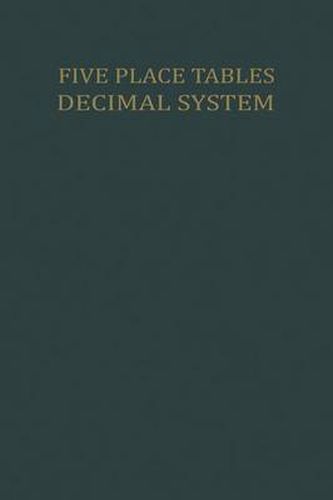Readings Newsletter
Become a Readings Member to make your shopping experience even easier.
Sign in or sign up for free!
You’re not far away from qualifying for FREE standard shipping within Australia
You’ve qualified for FREE standard shipping within Australia
The cart is loading…






This title is printed to order. This book may have been self-published. If so, we cannot guarantee the quality of the content. In the main most books will have gone through the editing process however some may not. We therefore suggest that you be aware of this before ordering this book. If in doubt check either the author or publisher’s details as we are unable to accept any returns unless they are faulty. Please contact us if you have any questions.
Instead of the old division of the right angle in 90 of 60’ at 60 each, the following division finds ever more frequent application: one quadrant has 100 grades (gr), which in their turn are sub- divided decimally in decigrades (dgr), centigrades (cgr), milligrades (mgr) and decimilligrades (dmgr). In using instruments upon which the quadrant is divided into 100 equal parts, in working with a calculating machine or a slide rule the new division has all the advantages and the old system all the disadvantages. Another important advantage of the new system is that the arcs take their place in the decimal system. One fourth of a meridian of the earth is 10.000 km, also 100 X 100 cgr; hence one km equals 1 cgr of the circumference-of the earth. If the arc of a longitude gr then circle between two given points on the earth be 14,26 their distance measured along this arc is 1426 km. It further follows that 1 mgr of the meridian equals 1 hm and 1 dmgr 10 meters. This simple calculation shows that for use in schools we should confine ourselves to milligrades (1 mgr = 3 ,24). Experts have assured me that for most practical applications milligrades are sufficiently accurate.
$9.00 standard shipping within Australia
FREE standard shipping within Australia for orders over $100.00
Express & International shipping calculated at checkout
This title is printed to order. This book may have been self-published. If so, we cannot guarantee the quality of the content. In the main most books will have gone through the editing process however some may not. We therefore suggest that you be aware of this before ordering this book. If in doubt check either the author or publisher’s details as we are unable to accept any returns unless they are faulty. Please contact us if you have any questions.
Instead of the old division of the right angle in 90 of 60’ at 60 each, the following division finds ever more frequent application: one quadrant has 100 grades (gr), which in their turn are sub- divided decimally in decigrades (dgr), centigrades (cgr), milligrades (mgr) and decimilligrades (dmgr). In using instruments upon which the quadrant is divided into 100 equal parts, in working with a calculating machine or a slide rule the new division has all the advantages and the old system all the disadvantages. Another important advantage of the new system is that the arcs take their place in the decimal system. One fourth of a meridian of the earth is 10.000 km, also 100 X 100 cgr; hence one km equals 1 cgr of the circumference-of the earth. If the arc of a longitude gr then circle between two given points on the earth be 14,26 their distance measured along this arc is 1426 km. It further follows that 1 mgr of the meridian equals 1 hm and 1 dmgr 10 meters. This simple calculation shows that for use in schools we should confine ourselves to milligrades (1 mgr = 3 ,24). Experts have assured me that for most practical applications milligrades are sufficiently accurate.